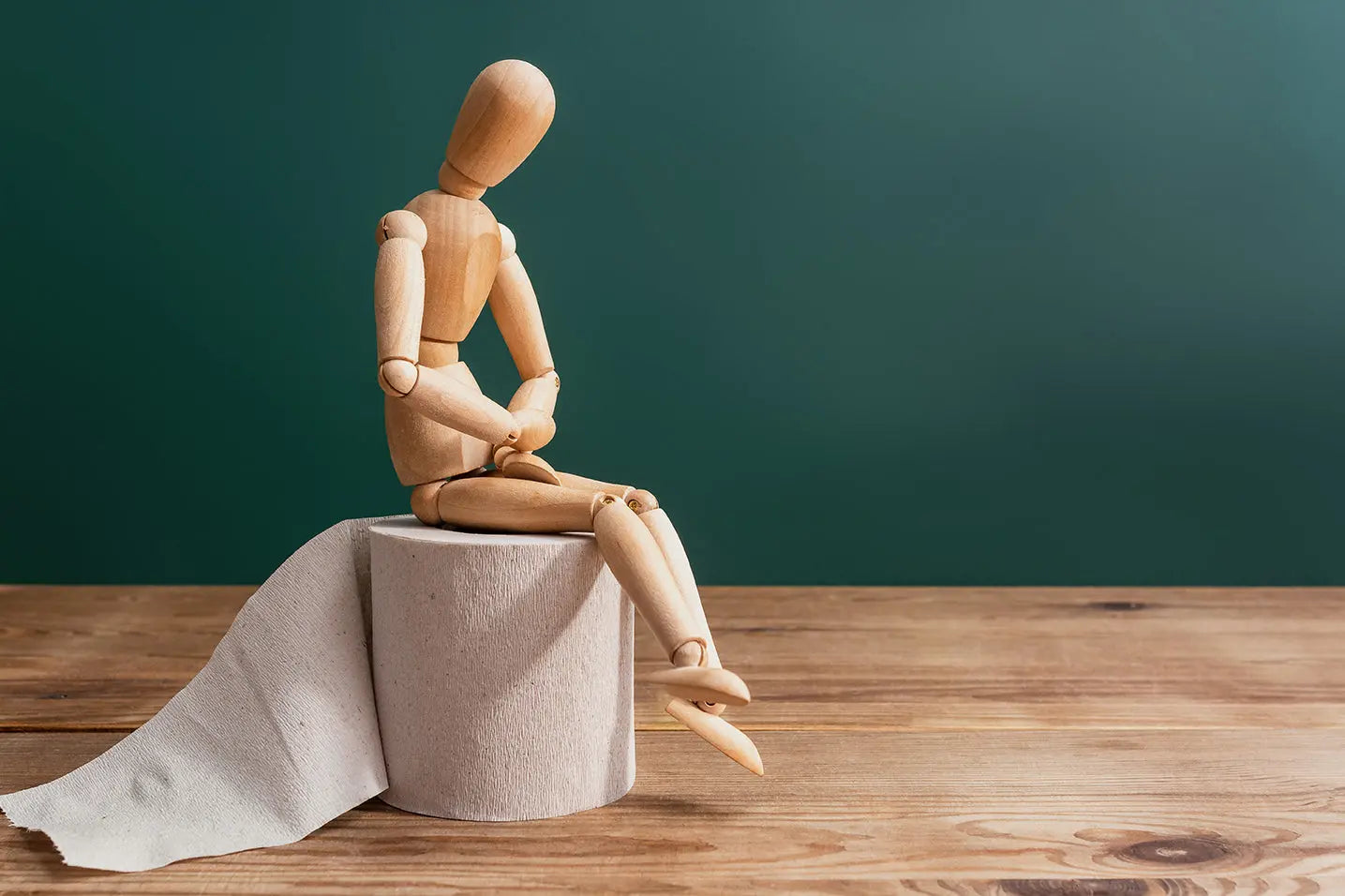However, try not to worry! There are plenty of lifestyle changes you can start making today which will reduce your risk of constipation. Read on to find out more...
What is constipation?
NHS guidance suggests you may be constipated if any of the following apply:
- You’ve not had bowel movement at least 3 times per week
- Your stools are difficult to pass and larger than usual
- Your stools are hard, dry or lumpy
If you’re constipated and discussing this with a clinician, they may ask you to identify the type of stool you’re passing by referring to the Bristol Stool Chart. This chart provides images and accompanying descriptions for each type of bowel movement you may experience. The lower end of the scale indicates constipation, and the higher end of the scale is for looser stools/diarrhoea.
Causes of constipation
Constipation can be caused by the following:
- Not maintaining a sufficient fluid intake
- Not including enough fibre in the diet
- Lack of physical exercise/movement
- Some medications (This can include some strong painkillers & antidepressants. If in doubt, speak to your GP)
- Delaying opening the bowels when the urge to go is felt
- Excessive use of laxatives
- Pregnancy
How can constipation affect my catheter?
The bowel and the bladder are positioned close together. If pressure builds up in the bowel (from constipation), this can obstruct the flow of urine through the catheter. Straining during bowel movements can also cause urine leakage when you have a catheter, irrespective of whether you’re using a leg bag or a valve.
What can I do to avoid constipation?
Consider the following to avoid constipation:
- Drinking more fluid. Ideally, you should be aiming for 1.5 litres to 2 litres per day. There are now lots of water bottles available (in the shops and online) which help to track your fluid intake throughout the day. If you're prone to bloating and trapped wind, avoid the water bottles with straws. When you drink through these, you also swallow excess air, which can make some people feel uncomfortable.
- Eat more fruit and veg. This is an excellent way to increase your fibre intake. Insoluble fibre helps to add bulk to your stools, making it easier for them to pass through your system. Nuts, seeds and beans are all good sources of insoluble fibre. Take care to increase fibre gradually though. A sharp increase can cause bloating and excess wind.
- Get moving! Physical movement helps to stimulate the gut and will help to get stools moving through more efficiently. There are exercises you can do, regardless of your physical ability. For example, if you’re in a wheelchair or bedbound. If you’re unsure of where to start or which exercises you’ll be able to do, don’t hesitate to discuss this with your healthcare professional.
- Medication review. Some medications cause constipation as a side effect. If you feel your medication is causing you problems, discuss this with your GP and they may be able to suggest alternative medication which lessens this side effect.
- Go when you feel the urge to go! Stools will dry out and become harder to pass the longer they remain inside. It’s important you listen to your body and always go when you feel the urge. Some people develop a phobia of going to the toilet away from home. If you’re concerned about smells, why not try some toilet spray? These products can be stored discreetly in a handbag or pocket. Before using the toilet, you squirt a few sprays on the water. This creates a protective barrier and any smells are kept within the toilet bowl.
- Don’t abuse laxatives. Some types of laxatives work by causing the muscles in the bowel to contract, helping to push stool along. If these medications are abused, it can result in damage to the nerves which control these contractions.
If you've followed the above tips but still struggle with constipation, please see your GP so they can advise you further and perhaps make alternative suggestions.

